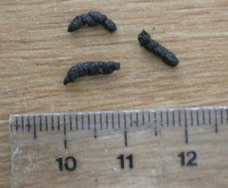Bats and Gardens
Whether you want to attract bats, birds, butterflies or any other native wildlife, be sure to offer a mix of native plants. That's especially important for bats that eat nectar or fruit. Native plants are their primary food source. Fruits can encourage native insects to congregate, too, which is important for insectivorous bats.That may seem pointless if your yard is already teeming with bugs, since that's why you want bats in the first place. Bats prefer habitats with diverse diets. Bats feed after dark, so ideally you should plant night-blooming flowers to attract nocturnal insects like moths. Better Homes and Gardens suggests datura, moonflower, four-o'clock, yucca, evening primrose, night-blooming water lily, night-blooming jessamine, cleome and nicotiana. Planting night-blooming flowers will help attract bats as well as bees.
Native trees are another key feature of good bat habitat. Whether or not you add a bat house, they might provide valuable spots for roosting and resting during the summer. And while some microbats hunker down in caves for winter, a few just hibernate in trees. North America's eastern red bat, for example, over winters in tree tops, bark crevices and sometimes in brush piles.
Plant a Bat Garden
Bats eat night flying insects.
If you would like to attract bats to your garden, you may want to plant
flowers that are late day blooming or night
scented. These plants will attract
night pollinators, like moths, which bats like to eat.
Here are a few suggestions:
Native:
Evening primrose
Phlox
Night flowering/Silene catchfly
Fleabane
Goldenrod
Non-native:
Four o’ clocks
Salvia Nicotiana
Moonflowers
Urban gardeners who want to support bats can create habitats like bat houses and supply pollinator-attracting plants. Plants like milkweed attract night pollinators, like moths – a diet staples for bats. Gardeners can also use plants that bloom late in the day, are scented at night, and are lighter in color. One of the biggest threats to urban bat populations are pesticides, which can affect a bat’s ability to navigate using echolocation.
Some other tips for a garden that attracts bats:
Dead trees are also important bat habitat; they provide a place for insects
to gather and as roosting spots for bats. Train fragrant perennial vines to
climb wall
s or fences to provide possible roosting sites. Create a sheltered
corner by using any combination of walls, fences, or hedges at two angels.
Ponds provide water for insects to reproduce. Un-mown areas provide
shelter and food for insect larvae. Garden lights can attract insects and
serve as a feeder for the bats. Garden organically. Pesticides can be very
harmful to bats and other wildlife.
Bats can help your garden by eating agricultural pests including cutworm moths,
chafer beetles, potato beetles and spotted cucumber beetles. Some moths
can detect a bats’ echolocation and will avoid the area where bats are
present.
Bats are very important to many species of plants around the world. In the tropics, fruit and nectar feeding bats are very important to the survival and re-growth of the rainforest. Fruit eating bats disperse rainforest seeds as they fly, many miles each night. Nectar feeding bats pollinate the flowers of many valuable plants, including bananas, mangoes, dates and figs. In desert areas, bats are important pollinators. Many cacti species depend on bats for pollination and only open their flowers at night. Bats are the primary pollinators of the pipe organ cactus and the agave from which we produce tequila. And of course the many insect eating bats found around the world are important in protecting plants by controlling the insect pest population. In order to survive until spring, hibernating bats must store large amounts of fat and lower their body temperatures as much as possible to reduce metabolic rates and consequent weight loss.
Bats Make Great Fertilizer

Bats do much more than keep the insect population at bay. Bat guano is a suitable fertilizer for plants and lawns, making them healthy and green. Their excrement is also an excellent organic fertilizer. Bat guano, as it’s called, has a long history as a soil enricher. Bat guano is low in odor and works to make plants and lawns green and healthy because it’s rich in nitrogen, phosphorus, and potassium, all of which aid in plant growth. It can be used to enrich soil when used as a top dressing, or by making a “tea" and using it with regular watering practices for deep root feeding. It can be used as a natural fungicide and controls nematodes in the soil as well. In addition, bat guano makes an acceptable compost activator, speeding up the decomposition process
To make bat guano tea for your garden, simply let it sit it in water overnight (generally 1 cup of guano per gallon of water), then water your plants with the mixture. This natural and safe plant enhancer can be used on flowers, ornamentals, vegetables and herbs.
Due to the increased use of pesticides and habitat loss, bat populations are declining in most areas. By creating a bat-friendly garden and yard, not only will the bat population benefit, but you will also be doing good on a grander scale.







